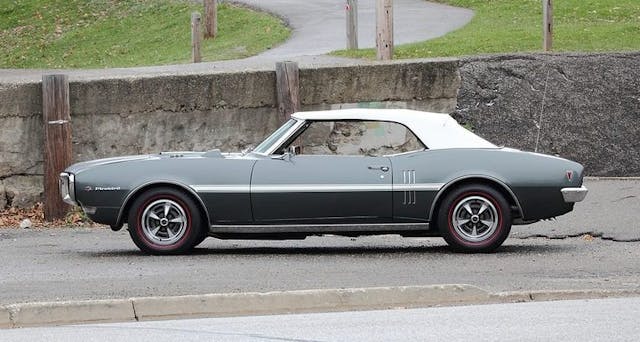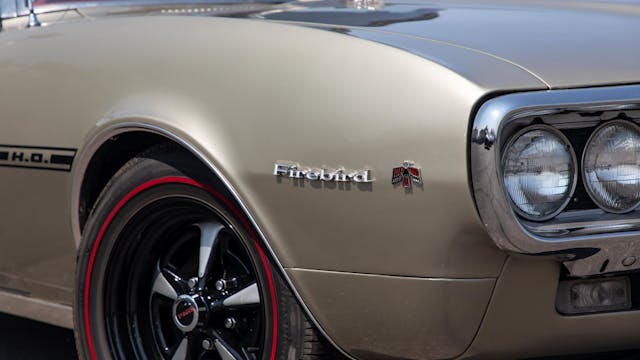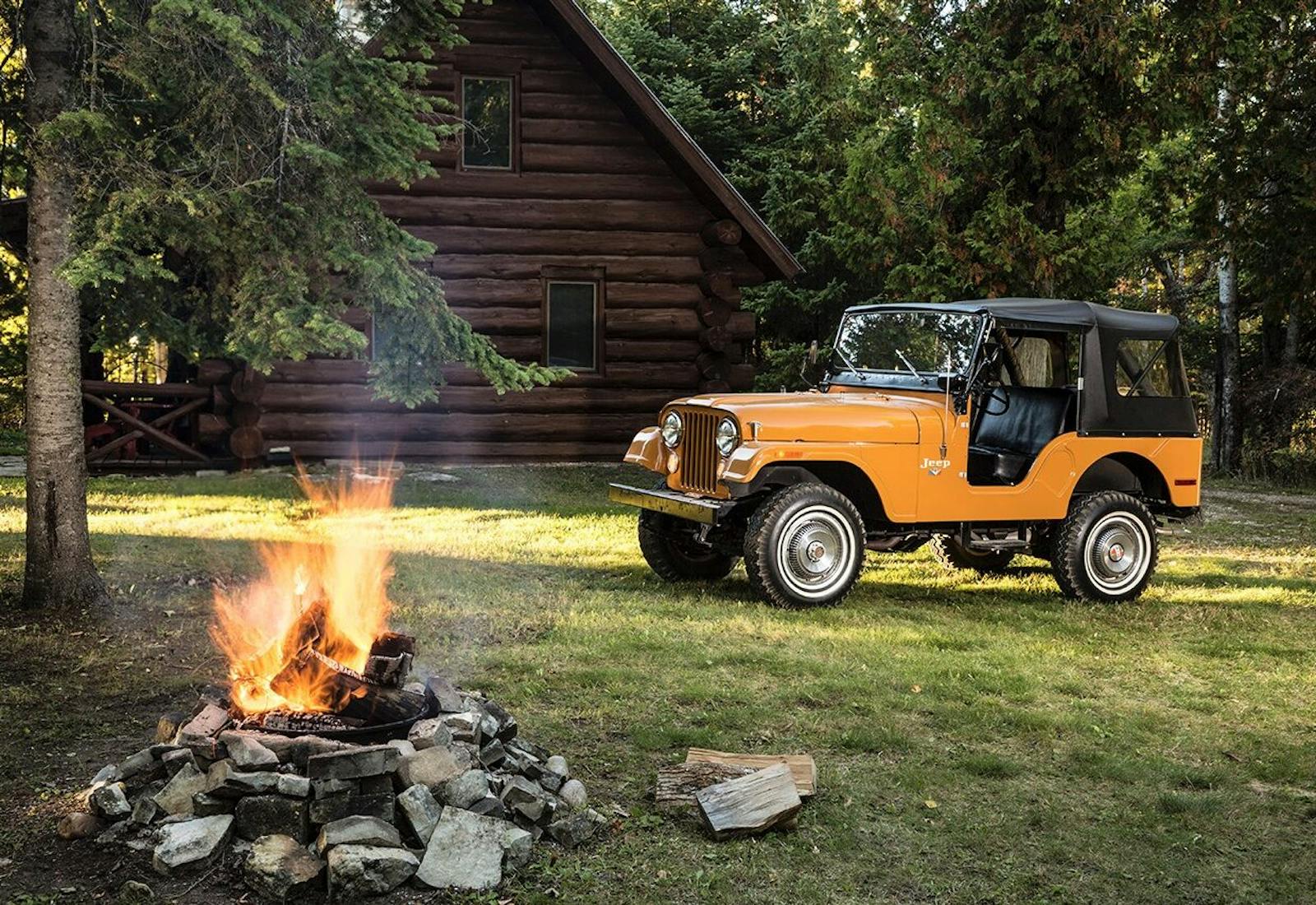Know these 4 common muscle car restoration gaffes to save yourself a costly mistake
Do you find yourself lost when trying to learn concours-caliber details about cars? Are you filled with self-doubt when checking out a car for purchase, especially from afar? You’re not alone, fellow enthusiast! But rather than focus on the nitty gritty that’s out of your league, why don’t we hone on the things that are easy to discern and go from there?
Below are several examples of common restoration mistakes that crop up with popular cars, particular in the muscle car world. Some may be considered negligible, but even the smallest thing that doesn’t add up with a car could be a sign that some deeper scrutiny is in order.
1967–68 Pontiac Firebird and its many stripes
The 1967 Firebird was introduced several months after the Camaro. Unique to the Firebird was five models marketed for different kinds of drivers:
- Firebird
- Firebird Sprint
- Firebird 326
- Firebird H.O.
- Firebird 400
Within these five there was the Magnificent Three, a trio of Firebirds to garner the most desire from enthusiasts: Firebird Sprint, Firebird H.O., and Firebird 400. The sleeper of the bunch was the Firebird H.O. (“High Output”), which consisted of the 4-barrel 326 H.O. for 285 horsepower; for 1968, the H.O.’s engine was bumped to 350 cubic inches and horsepower rose to 320 horses. For both years, the H.O. came standard with a longitudinal stripe with “H.O.” script on the front fender. A similar stripe was optional for other Firebird models but it was continuous without any script.

In recent years, you may have happened across a 1968 Firebird 400 with the H.O. stripe—even in books—but that would be incorrect for the period. The reason for this blunder may have something to do with a new engine upgrade introduced for the 1968 Firebird called the 400 H.O. As the first step-up option for the Firebird 400, this 335-horse engine was essentially equal to the 360-horse 400 H.O. available for the GTO.
However, the Firebird H.O. was its own distinctive model, so the application of the H.O. stripe on a Firebird 400 would be a no-no for purists.

Pontiac decals that never appeared on Pontiacs
Mecum’s recent auction in the Phoenix, Arizona, suburb of Glendale featured a first-generation Firebird with an air cleaner decal that’s commonly seen on Pontiacs at cruises and shows. You may have seen it on Pontiacs with engines ranging from 350, 400, 428, and 455 cu. in.

Perhaps it will surprise you to learn, then, that Pontiac never ever used a decal like this back in the day.
It gets even stranger. If the decal looks somewhat familiar yet you can’t put your finger on why, there’s a reason for that: it was adapted from a Buick design that first appeared in 1969 and lasted through the mid-1970s.

Despite this fact, many restoration catalogs feature this decal for a myriad of Pontiacs, though such example concedes that, “These air cleaner decals for Pontiacs are aftermarket-style only.” Other catalogues are not so forthcoming.
1968 Oldsmobile 4-4-2 stripe
Nineteen sixty-eight was a big year for the 4-4-2 for a number of reasons: a complete redesign brought all-new styling while becoming an actual model instead of a performance package. Additionally, a new long-stroke 400 replaced the short-stroke 400 that had been used since 1965, plus 1967’s Turnpike Cruiser option jumped from the Cutlass Supreme to the 4-4-2 series.

Visually, there was a nifty “W36” Rallye Stripe that was standard on cars equipped with the W30 package and optional for other 4-4-2s. This interesting stripe, which was available in white, black, red, and orange, ran vertically on the front fenders. In recent years, when people apply or paint the stripe, they often do it incorrectly. Witness this example:

Notice how it hits the wheel arch at the bottom? The factory never did it that way. In fact, for cars equipped with the stripe, Oldsmobile moved the 4-4-2 badges slightly towards the door so the stripe could extend uninterrupted to the bottom of the fender. A properly applied stripe will never hit the wheel well, though even that is no guarantee the stripe has been applied to factory specs. Just do an online search and notice the variations.
1969 Plymouth and Dodge 383 engine colors
It seems every other Mopar guy or gal will tell you that the 383 as installed in a 1969 Road Runner was painted orange. Ditto the Super Bee. However, that’s not quite true.

Let’s begin with some history. Both the Road Runner and Super Bee came standard with a 383 rated at 335 horsepower. It was painted orange. Non-performance models like the Belvedere, Satellite, Sport Satellite, and the Coronet Deluxe, 440, and 500 could be equipped with a 383 4-barrel rated at 330 horsepower, and this engine was painted turquoise. The main difference between the two engines was the camshaft.

However, if you ordered a Road Runner or Super Bee with air conditioning, Chrysler downgraded the engine to the milder version, meaning AC-equipped Road Runners and Super Bees featured a turquoise 383. This fact was hardly publicized (though the Dodge dealer album mentions it), but today we have supporting documentation from build sheets and the enthusiasts who understand the archeology. Even more interesting—Chrysler handled this dynamic differently in 1968 and 1970 … though perhaps a story for another time …
What other common, model-specific restoration gaffes can you think of that may serve as red flags? Post them in the comments below.



Hey Richard, Are you sure about the dash? The ’68 GTX was my first car, which I bought used in 1972. It burned to the ground in 1977, but I’m pretty sure it had a horizontal speedometer.
LOL! We are starting to sound like stamp collectors, counting the number of perforations and checking watermarks. But I get, these little items can potentially represent some serious money nowadays.
B
Back in the day we blew motors, rears and transmissions up like there was no tomorrow. An engine swap was almost a give me. I can’t afford the exact restored cars of my youth but that’s ok. Drive what you got, paint it your color, and stripe it your way. If I become excessively rich one day I may care. Today, not so much. Drive it and enjoy it. See simple.
Well, I’m in the clear on the w36 stripe as my car is documented to have it. Phew……
You’re lucky to have docs for a 68 Olds. Virtually nothing but Canadian built cars or cars exported to Canada have docs.
Hi, I’m also calling-out fake 400 firebirds. the arrow-head not on front bumper is the worst….don’t know if the clip was replaced/wrecked? Also, 400 ordered firebird had suspension upgrades/ bigger bars/ bigger rad/trans/ac rad. 400 emblem trunk. the rear spoiler was only for 69′ trans am…it just hides the “pontiac” and the 400!…maybe because they didn’t have that stuff? camaro spoiler?! looks like s**t!
I agree with every one of your points and would like to add several more.
1. Pontiac did not place “Ram Air”stickers on ‘70 Trans Am hood scoops.
2. The rear spoiler was not available on the 1970 Formula 400 Firebird. It became optional starting in 1971.
3. 1969 Trans Ams “restored” to the appearance of the car in the magazine ads of the time ( wrong color stickers, stripes over the rear wing, cast “Firebird” name on the front fender, etc ).
4. Tri-Power badging on 1959 Bonnevilles. They are positioned differently on each car and even if so equipped, Bonnevilles did not get the emblem installed at the factory due to the crest on the door.
One thing no one has said is that the 400’s had a traction bar installed from the factory, (only one)
I think the worst mistake is on the 1968-69 GTO (and 1st Gen. Firebird 400) dual scooped hoods that don’t have the inside of the scoops painted matt black, it looks REALLY bad on the lighter colors, but that just screams lazy.
A 74 Camaro with a 75-76-77 front grill. 74 had the emblem in the grill, not above it, 75, 76, 77 had emblem above the grill, not in it.
having a correct, numbers matching totally restored and documented 1969 Z/28, I have observed many incorrect parts, finishes and paint jobs….. the biggest most obvious is the INCORRECT painted black grill (all non-ralley models were argent silver) and INCORRECT trunk stripes which extend beyond the deck lid itself, they never touched the body only the lid! Also incorrect placement of the Z/28 emblem in the grill and then the headers which special dealer ordered and shipped in the trunk of the car and installed by dealers. I could go on and on….but I’ll just go and admire my beauty and lower my blood pleasure!
Oldsmobile Fans Pay attention Please. I’ve always been a factory stock exterior with only Engine, Clutch, Tranny, and suspension upgrades. I recently purchased a CHROME BASE for my 1970 W30 442. I’ve never seen another one. Judging by the quality of the Chrome work, it looks like a GM Factory job. not flawless, but awesome. Never seen another one like it. & neither have any of my Olds Contacts. Have any of you 442 Olds fans seen one? ???
Thats a Chrome Carburetor Base..Flapper door fits on it, with a small steel flat black cover holding down the air filter. (Left that out!)
Age is my downfall… AIR FILTER BASE.. Has all the Holes just like my original, with the thermostatic Valve on the Air horn AND TWO ROLED OVER HOLES FOR THE VALVECOVER BREATHER TUBE RUBBERS, AND the five small vent holes on the bottom. I think that about covers it.
52 years in the hobby now, did my share of complete restorations to a very high end, sold them all, my collection now consists of low mileage, documented, original paint, interior, drive train, REAL survivor cars, I meter the paint, I now know what to look for etc. when I buy one. The beauty with these cars is you may only need to do minor corrections to items changed through the years that were done to maintain the car, items such as fan belts, hoses, clamps, batteries, battery cables. etc. I’m talking real survivor cars, the ones that have already been in magazines, have already been judged in competition and are used by others for research and pics while duplicating a complete rotisserie restoration. The beauty of these cars is when you need to change out a part you can either use an NOS part or a good used OEM part, plus you get to drive them once in a while and enjoy them, keep them clean and maintained, the patina is still basically the same. These cars in judging can compete with the best restored cars, because that’s how the factory built them. I’m done with restorations, I love when I take one of my cars to a show and some one says,” nice restoration”, and I tell them it’s not restored…
For a hobbyist driving and modifying an old car for fun it doesn’t matter. For someone looking at spending serious dollars for a restored car or a purportedly original car these are great tell tales of fakery or poor work.
The 68-69 mopar 383-4 330 hp engines were turquoise, but also did not have a pie tin calling out the engine size, only the 383 335hp and 440 magnums did, also the 440 magnum was turquoise in 68 and orange in 69
Fake split bumper Camaro. Can tell by the parking lights a mile away
And fake Z28s by the dozens! Also hate to see Chevelle SS stripes that come to a point nearest the center line on a Camaro. Plus for 2nd Gen Camaro, stripes were Z28 option not SS like Chevelle.
I came for the Camaro comments, surprised to see so few. I’ll keep it short. Went to a car show a couple years back and saw a 1969 Camaro Z28, badges and stripes everywhere. Looked inside, car had a big block, AC, and an automatic. I told old boy he had the rarest car I’d ever seen, for sure! Z28 mixed with SS badges is always a hit, too.
“Fake split bumper Camaro. Can tell by the parking lights a mile away”
AMEN! One of my pet peeves too. The grille and grille extension are different too on a real split bumper.
Well I’m not sure if anyone else has noticed this particular oddity but I swear there are more ‘66 GTO’s in the world now than there was in ‘66????? 🙃